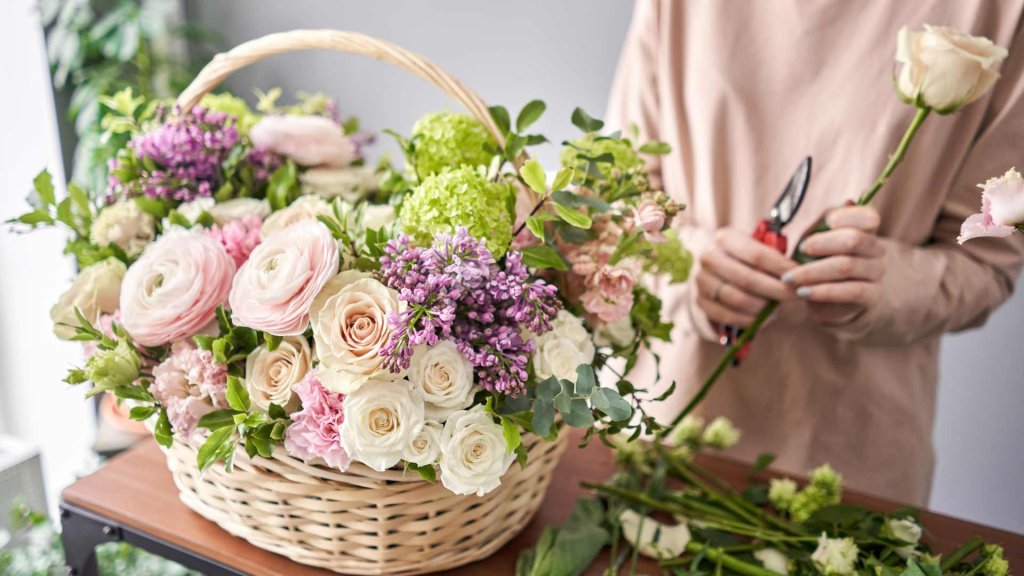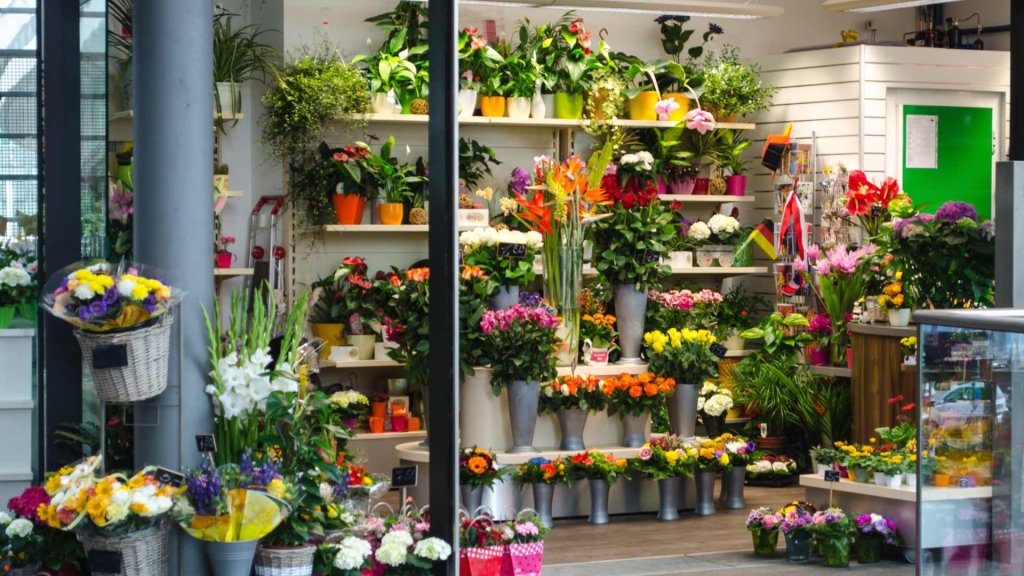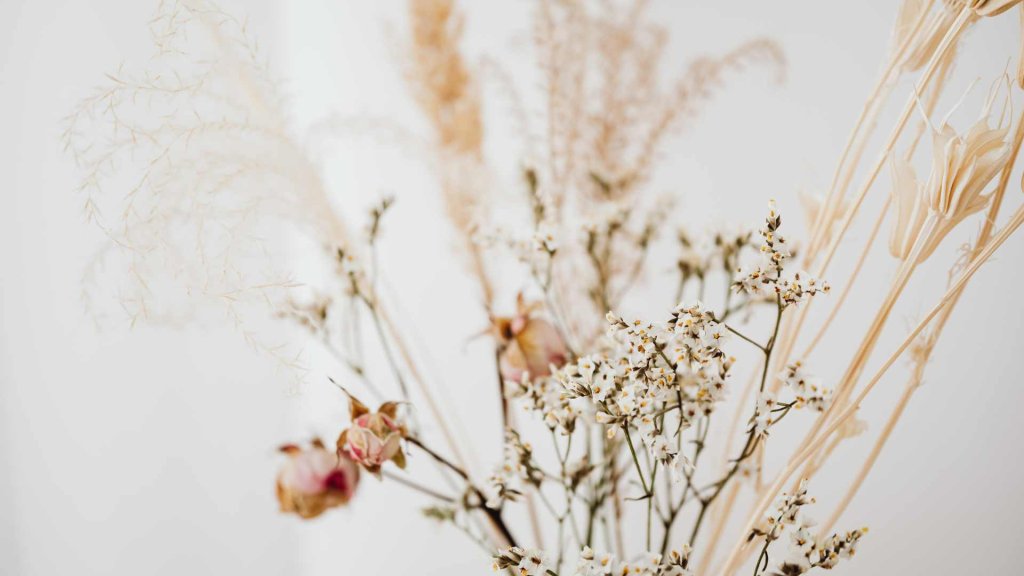VIEW BY TOPIC
- Finding Customers
- Business Systems
- Managing Employees
- Leadership
- Managing Money
Related Posts

Ready to Grow Your Business Fast?
Here’s How I Grew Five Businesses, and Eventually Sold One to a Fortune 500 Company.

Simple Steps To Starting Your Floral Business Side Hustle
As an entrepreneur running a flower business, you have many responsibilities to ensure profitability. Managing finances, reports, and inventory effectively is crucial to success.
Developing a robust marketing and sales strategy is of utmost importance for your flower shop.
A well-thought-out plan makes attracting new customers, increasing sales, and establishing brand recognition easier.
Mere existence as a flower business needs to be improved; you must proactively engage with your target audience and convert them into loyal patrons.
In a competitive florist market with growing demand, the success of your floral business hinges on smart marketing.

Furthermore, you must ensure that your floral business has a digital presence. This will ensure your business reaches more clients. What’s more, having a digital presence and online delivery, you can also serve people from different states, just like the flower delivery in Anchorage.
If your small business is not expanding at the desired pace, a tailor-made marketing plan can address these issues, provided it’s founded on intelligent strategies.
Fortunately, we have you covered with valuable tips to help your flower business outshine the competition.
Why Start Floral Business As Your Side Hustle?
More and more people are exploring opportunities to pursue their passions, expand their skill set, and boost their income.
If you’re considering a side hustle, have you ever considered starting a floral business? It might not be the first idea that comes to mind, but it’s a venture that offers a bouquet of benefits.
Here’s why starting a floral business can be a good idea.
A Blossoming Creative Outlet
One of the most enchanting aspects of starting a floral business as your side hustle is the opportunity to tap into your creativity.
Working with flowers is an art form that allows you to create stunning arrangements, each a unique masterpiece. It’s an incredibly satisfying way to express your artistic side and find beauty in the natural world.
Flexible Petal-Powered Schedule
Life can be hectic, with full-time jobs, family commitments, and social obligations. That’s where a floral side hustle truly shines. It offers the flexibility to work around your existing schedule.
Whether you’re a 9-to-5 professional, a student, or someone with a busy family life, you can tend to your floral business when it suits you.
Low Overheads, High Blooms
Many businesses come with substantial startup costs and overheads. In contrast, a floral business typically has relatively low expenses.
You can start from home, negating the need for a physical store or extensive infrastructure. It’s a cost-effective way to test the entrepreneurial waters.
Emotional Fulfillment in Every Petal
Imagine the satisfaction of creating arrangements that bring joy and comfort to people’s lives. The act of giving and receiving flowers is steeped in tradition and emotion.
Your floral side hustle can be a source of profound emotional fulfillment as you contribute to special moments in people’s lives.
Seasonal Opportunities in Full Bloom
Flowers are not limited to everyday occasions. Depending on your interest, you can specialize in seasonal events such as weddings, holidays, or other celebrations. These peak demand periods offer fantastic opportunities to capitalize on the season’s spirit.
A Petal-Driven Learning Experience
Running a side business provides a wealth of learning experiences. You’ll gain insights into entrepreneurship, marketing, customer service, and financial management. The skills you develop can be invaluable, even beyond the floral industry.
Extra Blooms in Your Financial Bouquet
Of course, one of the most appealing aspects of a side hustle is the additional income it can bring. A successful floral business can provide a steady stream of extra income. This financial boost can help you achieve various goals, from saving for a special vacation to investing in your future.
Test the Waters Before Taking the Plunge
Starting a floral business as a side hustle allows you to test the waters before diving headfirst. It’s a low-risk way to assess the viability and profitability of your venture without the full commitment of a full-time endeavor.
Grow at Your Own Pace
As your side hustle flourishes, you can decide how far you want to take it. You can gradually expand your floral business, increasing your customer base and demand. This flexible growth model lets you decide whether to transition to a full-time operation.
Cultivating a Valuable Network
Every business venture is an opportunity to build a network. With a floral side hustle, you’ll connect with clients, suppliers, and industry contacts. This network is beneficial not just for your side hustle but also for your future endeavors.
A Passion Project in Full Bloom
Finally, turning it into a side hustle can be deeply fulfilling if you have a genuine passion for working with flowers. It allows you to turn something you love into a source of income, which can be a truly rewarding experience.

Steps To Start Your Floral Business
Starting a floral business is an exciting venture that allows you to explore your passion for flowers while creating beautiful arrangements for various occasions. Here are the essential steps to initiate your journey into floral entrepreneurship.
Step 1. Research and Planning
Before diving in, conduct thorough research to understand the local floral market. Analyze your competitors, identify your target audience, and assess their preferences and expectations.
Create a comprehensive business plan that outlines your business goals, the range of services you intend to offer, and a well-thought-out marketing strategy.
Step 2. Legal Formalities
Begin by choosing a suitable legal structure for your business, such as a sole proprietorship, partnership, limited liability company (LLC), or corporation. Select a unique and memorable name for your floral business and ensure it’s officially registered.
Additionally, familiarize yourself with the permits and licenses required to operate legally in your area.
Step 3. Location and Setup
Decide on the location from which you’ll operate your floral business. You may work from home, rent a floral studio, or open a retail shop.
Ensure that your workspace has the tools and equipment for floral arrangement. Establish relationships with reliable flower wholesalers and suppliers to secure a consistent supply of fresh blooms and implement efficient inventory management systems.
Step 4. Branding and Marketing
Craft a distinctive brand identity with a captivating logo and other branding elements. Develop a professional website showcasing your services, portfolio, and contact information.
Leverage the power of social media platforms such as Instagram, Facebook, and Pinterest to showcase your floral designs and engage with potential clients. Invest in online marketing strategies like advertising and search engine optimization (SEO) to bolster your online presence.
Step 5. Pricing and Services
Determine your pricing strategy, considering the cost of flowers, labor, overhead expenses, and the profit margins you wish to achieve.
Define the services you will offer: wedding arrangements, event decor, corporate clients, or daily flower deliveries.
Step 6. Supplies and Equipment
Invest in floral supplies such as vases, ribbons, floral foam, and packaging materials. Acquire high-quality floral tools like shears, scissors, floral tape, and wire, which are essential for creating professional arrangements.
Step 7. Staffing
Depending on the scale of your floral business, consider hiring skilled florists or assistants to aid in floral design and arrangement. Provide any necessary training to ensure quality standards are upheld.
Step 8. Customer Service
Emphasize excellent customer service. Respond promptly to inquiries, adhere to delivery schedules, and go the extra mile to meet and exceed customer expectations.
Step 9. Pricing and Contracts
Finalize your pricing structure and create transparent, easy-to-understand contracts for your services. Implement secure payment options, including online payment gateways, cash, or checks.
Step 10. Marketing and Promotion
Announce the official launch of your business through grand opening events or online announcements. Network within the industry, attend relevant events and establish connections with local businesses.
Collaborate with event planners, wedding venues, or other professionals to expand your client base. Develop marketing materials like brochures, flyers, and promotional offers to attract potential clients.

Step 11. Customer Retention
Prioritize building and maintaining long-term relationships with your clients. Send follow-up emails, express gratitude through thank-you notes, and offer special promotions to encourage repeat business.
Step 12. Financial Management
Implement accounting software to monitor expenses, revenue, and tax obligations. Create a comprehensive budget and financial plan to ensure the financial health of your business.
Step 13. Quality Control
Uphold consistent quality in your floral designs. Inspect each arrangement thoroughly to ensure it meets your established standards before delivery.
Step 14. Scaling Your Business
As your floral business grows, consider expanding your range of services. Explore options like hosting floral arrangement workshops or opening additional locations to accommodate a broader clientele.
Top Floral Design Trends to Watch in 2023
Floral design trends are ever-evolving, reflecting shifts in aesthetics, preferences, and societal influences. As you plan your floral business strategy for 2023, consider these top floral design trends that are likely to capture the hearts of customers:
Sustainable Floral Practices
Sustainability is not just a trend; it’s a movement. Customers are increasingly drawn to floral businesses that emphasize eco-friendly practices.
Use locally sourced flowers and foliage, reduce plastic waste, and implement sustainable packaging. Communicate your commitment to environmental responsibility in your marketing.
Dried and Preserved Flowers
Dried and preserved flowers continue to gain popularity. Their longevity and unique textures make them ideal for arrangements that last. Create bohemian and rustic designs by combining dried flowers with fresh blooms for an enchanting contrast.

Bold Color Palettes
Vibrant and bold color palettes are making a comeback. Customers are gravitating toward arrangements featuring vivid, striking colors.
Experiment with bright reds, yellows, and deep purples to make a statement. Color blocking and contrasting shades can create captivating designs.
Monochrome Arrangements
Monochromatic arrangements, where all the flowers are of the same color, offer a sophisticated and elegant look. Monochrome can highlight the subtleties of a single hue, allowing for a focus on texture and form.
Whimsical and Wild Arrangements
The garden-inspired, wild, and whimsical floral designs remain popular. These arrangements often feature a variety of flower types, heights, and textures, creating an effortlessly organic and charming appearance.
Minimalistic Aesthetics
Minimalism has influenced various aspects of design, including floral arrangements. Embrace clean lines and simplicity. Focus on a few carefully selected blooms with a minimalist approach that exudes elegance and understated beauty.
Terracotta and Earth Tones
Earthy, terracotta, and warm, natural tones are on-trend. These colors evoke a sense of groundedness and connection to nature. Incorporate terracotta pots, vases, or containers to complement these palettes.
Textural Variety
Texture is an essential element in contemporary floral design. Mix flowers with various textures, including soft, velvety petals, feathery fillers, and architectural greenery. Diverse textures add depth and visual interest to your arrangements.
Ethereal and Dreamy Styles
Create dreamy, ethereal designs with soft, pastel color palettes and wispy, delicate flowers. These arrangements evoke a sense of enchantment and romance.
Floral Installations
Large-scale floral installations are in demand for events, weddings, and commercial spaces. These installations, including arches, hanging gardens, or living walls, create a breathtaking and immersive experience for clients and event attendees.
Floral Jewelry
Floral jewelry, such as flower crowns and corsages, is gaining popularity. These wearable floral pieces are perfect for weddings, festivals, and special events.
Seasonal and Local Focus
Consumers increasingly appreciate the beauty of seasonal and locally grown flowers. Highlight the uniqueness of each season and the charm of locally sourced blooms in your designs.
Personalized Arrangements
Personalization remains a key trend. Create bespoke arrangements tailored to your customers’ individual preferences, occasions, and personalities. Offer a range of customizable options to make each arrangement unique.
Nostalgic and Vintage Inspirations
Draw inspiration from bygone eras, such as the Victorian or Art Nouveau periods. Incorporate vintage elements like antique vases, lace, and intricate details into your arrangements for a touch of nostalgia.

Make Your Own Florist Business Plan!
You’ve now gathered valuable insights on initiating and operating a successful floral business through this article. It’s the perfect moment to strategize and prepare for your flower business.
When planning, think big, but ensure your goals are SMART – Specific, Measurable, Achievable, Relevant, and Time-bound. These criteria will help you establish pertinent and achievable goals for your floral business.
Now, it’s time to get to work. Implement these tips, and remember to adapt them to suit the goals and scale of your floral business.
So, roll up your sleeves and begin the process. And don’t hesitate to fine-tune these strategies in line with your floral business’s specific objectives and scope.















